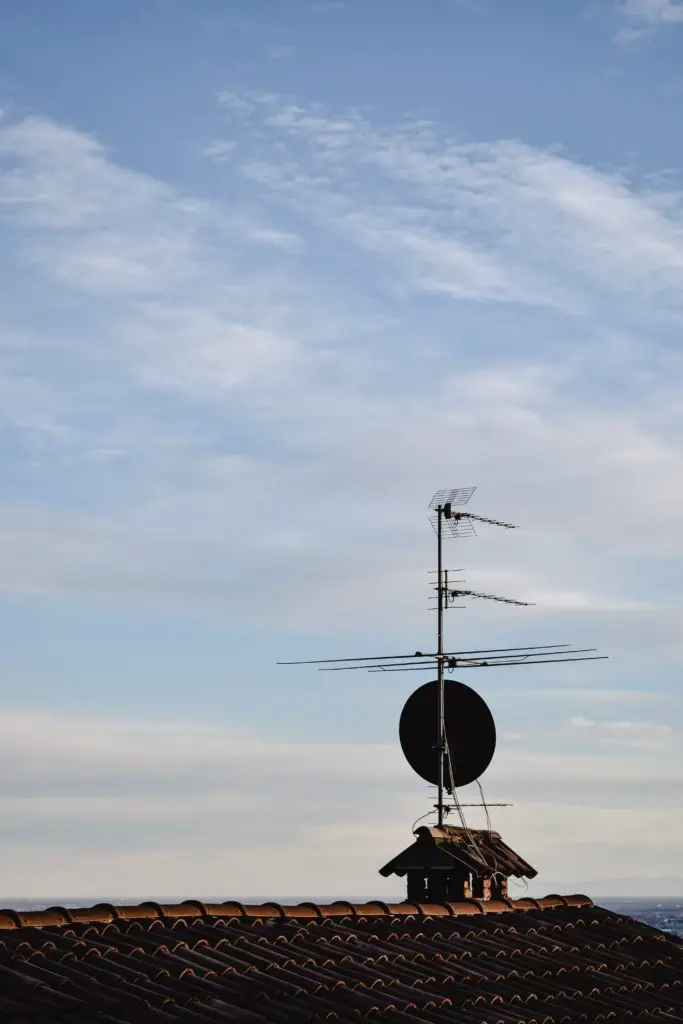Before you think of connecting your satellite dish to your TV you need to understand what satellite signals are, where they are coming from and how they are used. Satellite signals use a special format different from your television.

They receive their signals from the direct broadcast satellites. (DBS)
Which transmit signals through the Kú band (12-18GHz) and are digital
How to Get a Satellite Signal?
Look at a torch, you will realise that the amount of light spread to different directions has a central origin. Similarly, a satellite gets its signals from a satellite dish. The signals that land on the satellite dish are reflected in larger parts and travel directly to the satellite.
Types of Signals a Satellite TV Uses
Satellites come from far away and need demodulation. They have high-quality digital data that has to be compressed before transmission.
This compression is standardised by the moving-picture expert’s group (MPEG) MPEG standard;
I. Directv and DISH Network
● MPEG-2 – Initially to store movies on DVDs and digital cable television (DTV) ● MPEG-4 -currently used, designed for streaming videos on a small screen. It’s equipped to analyse static and dynamic images.
● It provides a high definition of moving objects that quickly change direction unplaced on the screen.
● These signals are encoded.
Connecting the Satellite Dish Directly to the TV?
● The satellite operates and uses different demodulation methods. Its frequency is about 10-12 GHz which is high and impossible to send to antenna cables unless it is converted to a format your TV can use.
● A low noise block (LNB) is used to convert the frequency into a safer value that is around 1-2 GHz.
● A receiver or set-top box, coax code and HDMI decode these signals into signals that television can read.
● The satellite can serve you Freesat shows and Ariels give you access to a free view program.
Steps to Connect a Satellite Dish to a Television
Connecting a satellite dish is no difficulty. Have the following requirements
● Television
● Dish
● Dish receiver
● Cables
Installation steps
● Place your television in the desired location so that you will not have to move it after installation.
● Determine the location of the dish. Remember to place your dish in a location that has good signal reception and do not position it in areas obstructed by trees, walls, powerlines, tall buildings etc. Preferably on a rooftop.
● Get your coaxial cable and HDMI cable ready on the back of your satellite dish, there is a label”LNB”. Plug in one end of the coaxial cable.
● There is another label “SATIN”. Just beside LNB. Connect the other end of the cable in the port
● Connect one of the HDMI cables on the ” output” behind your satellite dish.
● Plug the remaining end (HDMI) into your television.
● Switch on your television and tap the “satellite” button on the remote. You will see the signal on your screen. Check the signal strength and reposition your dish if it indicates weak signals.
● Scan channels to receive all the digital channels on your television. Watching Satellite TV on Smart TV
Enable UHD HMI colour (input signal plus)
Navigate to SETTINGS select GENERAL to go to EXTERNAL DEVICE MANAGER select UHD HDMI Color to connect a 4k device to HDMI on the HDMI port on your television.
Conclusion
In conclusion, you cannot connect your satellite dish directly to your television, satellite frequency is high and destructive unless it’s remodelled. You will have to buy a receiver, a coaxial cable and an HDMI cable to transmit these signals into a usable frequency that your television can accommodate. While connecting your satellite dish to your television. make sure all the cables are connected to the right port, and avoid short-circuiting. However, there are smart televisions that come with satellite TV features. Use remote and navigate and configure.
1. Frequently Asked Questions.
- How do I activate my inbuilt satellite?
New digital smart TVs now come with built-in features to enable users to watch satellite channels. Check out how to activate it;
● If your smart TV has a built-in cable or satellite TV, assess your location to find the availability of the technology brand or service provider.
● Install satellite dish( use the steps above)
● Check your TV guide. ( if it’s your service provider find the channels which are commercialized
● Use a smart card number to activate ( read through your smart TV operational menu to find your smart card number)
● Choose your subscription plan or the channels you want to watch and make payments and contact your service provider office to have your channels updated.
2. Does rain affect satellite internet?
Yes. Rain is the cable for absorbing or scattering satellite signals. It causes scattering by refracting electromagnetic waves around the surface of a satellite dish. Clouds do not affect satellite Internet unless there are severe thunderstorms with a dark cloud.
3. Do satellites use fuel?
Yes. Satellites do need hydrazine fuel ( highly toxic) or nuclear reactors or scalar energy to power themselves
